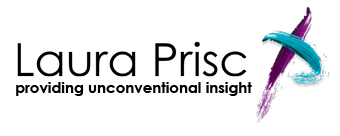Have you given much thought the need to adjust your strategy to adapt to changing dynamics in your business environment? I have been, prompted by a recent call with one of my mentors who brought up Kodak.
You remember Kodak, don’t you? For a while, it was Eastman Kodak, then just Kodak, and anyone with a camera — the ones that require actual film — will remember Kodak. Back then, we had to go to the store to buy rolls of film; then, when we’d taken our pictures, we took them back to the store or a film shop and dropped off the role of film to be developed…which often took a week to 10 days! Eventually, someone invented the 1-hour photo developing system, and that revolutionized photography (for us amateurs, anyway), for a while. Then along came digital photography. No longer did you need to buy film or have it developed; now the market was all about memory cards for your camera, and the pixel capability of your camera.
Clearly, this new business model didn’t fit with Kodak’s old model — sell film, photo paper, and developing services. So, how did Kodak respond?
At one point, albeit way too late in the transformation of its industry, the former giant attempted to reposition itself as the Memories company, with print-at-home photo paper and systems…but it was too late. Kodak had missed the boat and ended up filing for Chapter 11 Reorganization.
Are you even aware of what Kodak is up to — if anything — these days? I have to admit, I wasn’t sure if the company was even in business any longer. Turns out, a simple search indicates it is. Today, “Kodak has transformed itself into a technology company focused on imaging for business.”
According to its web site,
“Kodak sharpened its focus to commercial markets as part of a 20-month Chapter 11 reorganization in which it successfully removed large legacy costs, streamlined a complex infrastructure, and exited or spun-off businesses – including its remaining consumer imaging and document imaging businesses – that were no longer core to its future. People around the world will continue to see the Kodak brand through its commercial businesses and licenses with select business partners.
As a result of its reorganization, Kodak today is leaner, financially stronger and ready to grow – poised to take advantage of the digital transition underway in packaging markets; the growing demand for graphic communications products and services in emerging markets; and dynamic growth in the market for printed electronics, sensors, fuel cells and other printed products with functions beyond visual communications.”
This is a prime example of the need to adapt one’s strategy as the dynamics of business and industry shift, and they are constantly shifting. The point: One must adapt to survive, and this is as true for you — as leaders — as it is for your organizations.
Today, spend some time reflecting on the changes you’ve experienced in your industry in the past few years. What were some of the most dramatic? And what adaptations were required for your organization to remain relevant?
